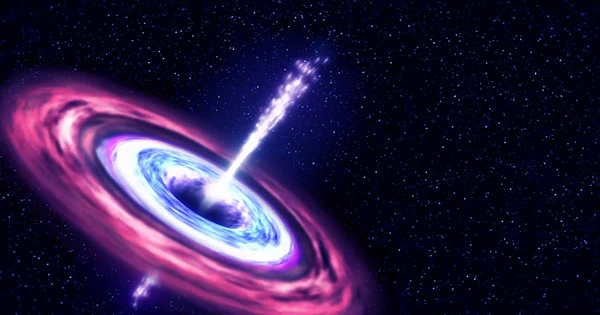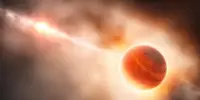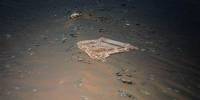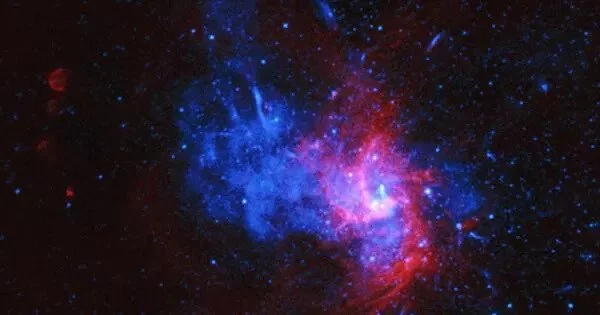Scientists detected a black hole in a distant galaxy constantly munching on a Sun-like star using NASA’s Neil Gehrels Swift Observatory, which debuted in 2004. The item represents the beginning of a new era in Swift science, made possible by a revolutionary way of processing data from the satellite’s X-ray Telescope (XRT).
“Swift’s hardware, software, and the skills of its international team have enabled it to adapt to new areas of astrophysics over its lifetime,” said Phil Evans, an astronomer at the University of Leicester in the United Kingdom and a Swift team member for many years. “The mission’s namesake, Neil Gehrels, oversaw and encouraged many of those transitions.” It’s now conducting even more fascinating science with this additional ability.”
Evans led a study on the unlucky star and its hungry black hole known as Swift J023017.0+283603 (or Swift J0230 for short), which was published in Nature Astronomy on September 7th.

When a star gets too close to a gigantic black hole, gravitational forces cause tremendous tides that shatter the star into a torrent of gas. The trailing edge departs the system as the leading edge swings around the black hole. Tidal disruption events are the name given to these devastating episodes. Astronomers describe them as multiwavelength light flares produced when debris collides with a disk of material already orbiting the black hole.
Astronomers have recently begun researching variations on this phenomenon known as partial or repeated tidal disturbances.
When an orbiting star comes close to a black hole during these episodes, the star bulges outward and losses material, yet it survives. The process is repeated until the star loses too much gas and eventually disintegrates. The features of the individual star and black hole system dictate the type of emission observed by scientists, resulting in a diverse range of behaviors to classify.
Previous examples include an outburst that occurred every 114 days and could have been triggered by a big star orbiting a black hole 78 million times the mass of the Sun. Another occurred every nine hours around a black hole 400,000 times the mass of the Sun, which was most likely triggered by an orbiting star cinder known as a white dwarf.
Swift J0230 was captured for the first time by the XRT on June 22, 2022. It appeared in the northern constellation Triangulum, 500 million light-years away. Swift’s XRT detected nine more eruptions from the same spot every few weeks.
Swift J0230, according to Evans and his colleagues, is a recurring tidal disturbance of a Sun-like star orbiting a black hole 200,000 times the Sun’s mass. They estimate that the star loses approximately three Earth masses of material with each visit. This method connects other sorts of hypothesized repeated disruptions and allows scientists to simulate how interactions between different star types and black hole masses affect what we see.
“We searched and searched for the event brightening in the data collected by Swift’s Ultraviolet/Optical Telescope,” Alice Breeveld, a research fellow at the University College London’s Mullard Space Science Laboratory (MSSL), said. “But there was no evidence of it. The variability in the galaxy was totally in X-rays. This helped to rule out some other possible explanations.”
Swift J0230 was discovered thanks to the Swift X-ray Transient Detector, a new automated search of XRT observations developed by Evans.
After seeing a region of the sky, the data is delivered to the ground, where it is compared against prior XRT images of the same location. If that region of the X-ray sky changes, scientists are notified. Evans and his colleagues were able to quickly arrange further observations of the Swift J0230 area.
Swift was created to examine gamma-ray bursts, the most intense explosions in the universe. Scientists have recognized the satellite’s capabilities to research a wide range of astronomical objects, including tidal disruptions and comets, since its debut.
“Swift J0230 was discovered only about two months after Phil launched his program,” said S. Bradley Cenko of NASA’s Goddard Space Flight Center in Greenbelt, Maryland. “It bodes well for the detector’s ability to identify other transient events and for Swift’s future exploring new spaces of science.”
The Swift mission is managed by Goddard in partnership with Penn State, Los Alamos National Laboratory in New Mexico, and Northrop Grumman Space Systems in Dulles, Virginia. Leicester, MSSL, Italy’s Brera Observatory, and the Italian Space Agency are among the other collaborators.
















